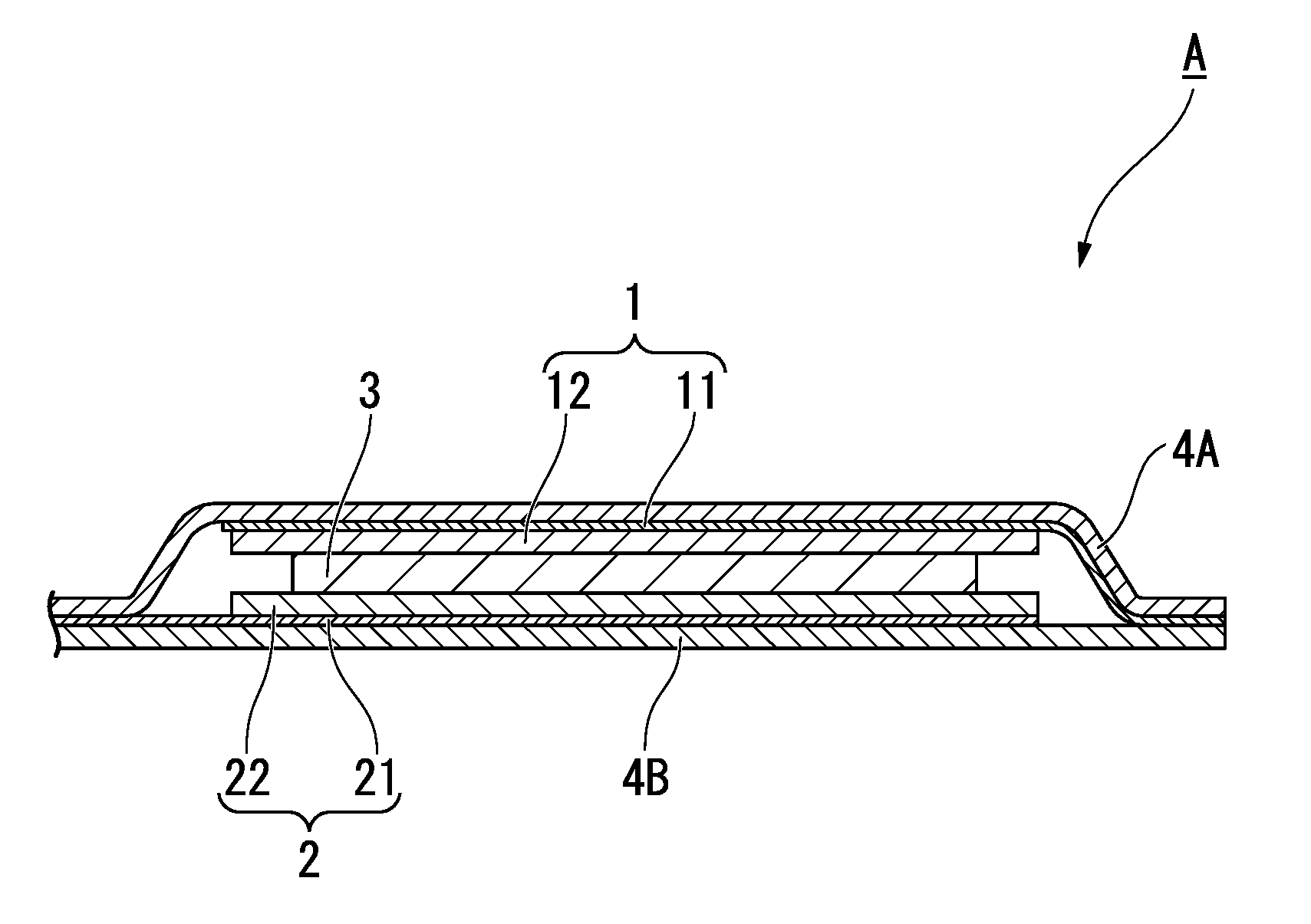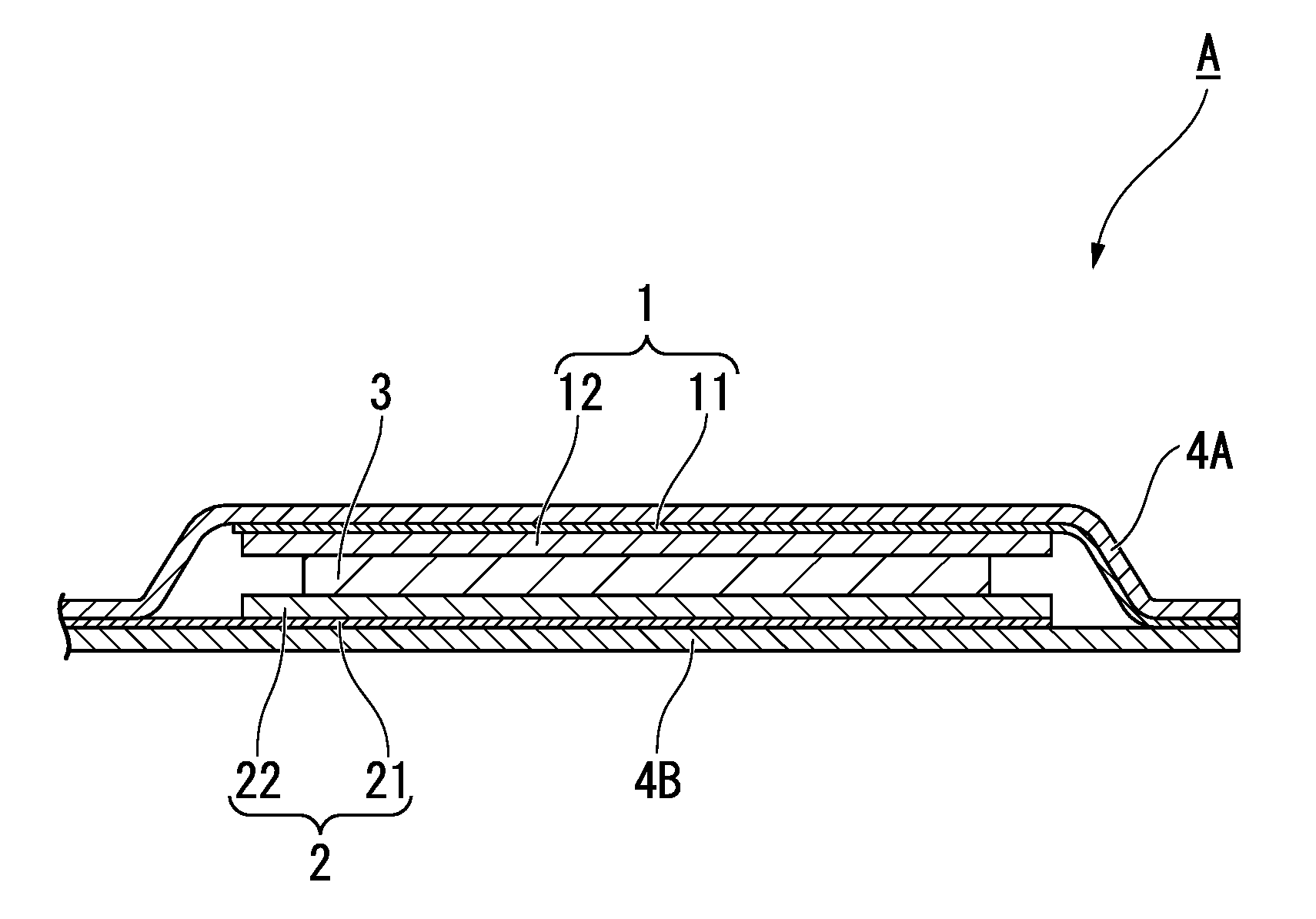Method for producing anode active material for secondary battery, anode active material for secondary battery, method for producing anode for secondary battery, anode for secondary battery, and secondary battery
a secondary battery and active material technology, applied in the direction of cell components, final product manufacturing, sustainable manufacturing/processing, etc., can solve the problems of deterioration of the characteristics of the lithium ion secondary battery, failure, and deterioration of the anode current collector, so as to improve the occlusion properties of lithium ions for charge transfer, improve the occlusion properties of the lithium ions, and improve the electrical capacitance.
- Summary
- Abstract
- Description
- Claims
- Application Information
AI Technical Summary
Benefits of technology
Problems solved by technology
Method used
Image
Examples
example 1
Synthesis of Anode Active Material for Secondary Battery
[0105]In Example 1, an anode active material for a secondary battery was synthesized by the following procedure.
[0106]First, 10 g of phosphoric acid (reagent grade) was added with stirring to 47 liters of pure water which was weighed in advance, and the resulting slurry (acidic aqueous solution) was further heated with stirring to hold the temperature at 98° C. Then, 7 kg of an aqueous titanium tetrachloride solution (manufactured by OSAKA Titanium Technologies Co., Ltd.) with a titanium concentration of 15% by mass was added dropwise to the resulting slurry for 120 minutes, and the temperature was further raised to 100° C. and was held for 90 minutes. At this time, cloudiness was observed from immediately after the dropwise addition of the aqueous solution of titanium tetrachloride. In addition, the pH of the slurry obtained here was 0.5. Furthermore, the resultant slurry in the form of a cloudy suspension was passed through a...
example 2
[0127]In Example 2, an anode active material for a secondary battery was formed to produce an anode for a secondary battery in the same manner as in Example 1 described above, with the exception that after producing a slurry containing titanium dioxide by the same procedure as in Example 1 described above, the amounts of the sodium metaphosphate (condensed phosphate) and calcium chloride (compound containing an alkaline earth metal) added to the titanium dioxide slurry were changed to 3 kg and 600 g, respectively. Then, by using the anode for a secondary battery, a battery cell was produced in the same manner as in Example 1.
[0128]Also in Example 2, as a result of the analysis of the crystal phase of titanium dioxide in the same manner as in Example 1 by conducting X-ray diffraction on the secondary battery anode active material which was dried and was in the form of a powder, it was confirmed to be titanium dioxide that included an anatase-type crystal form.
[0129]In addition, as a ...
example 3
[0132]In Example 3, an anode active material for a secondary battery was formed to produce an anode for a secondary battery in the same manner as in Example 1 described above, with the exception that after producing a slurry containing titanium dioxide by the same procedure as in Example 1 described above, the sodium metaphosphate (condensed phosphate) added to the titanium dioxide slurry was changed to 2.3 kg of sodium polyphosphate. Then, by using the anode for a secondary battery, a battery cell was produced in the same manner as in Example 1.
[0133]Also in Example 3, as a result of the analysis of the crystal phase of titanium dioxide in the same manner as in Example 1 by conducting X-ray diffraction on the secondary battery anode active material which was dried and was in the form of a powder, it was confirmed to be titanium dioxide that included an anatase-type crystal form.
[0134]In addition, as a result of the FT-IR analysis of the dry powder of the secondary battery anode act...
PUM
| Property | Measurement | Unit |
|---|---|---|
| number average particle size | aaaaa | aaaaa |
| electrical potential | aaaaa | aaaaa |
| number average particle size | aaaaa | aaaaa |
Abstract
Description
Claims
Application Information
 Login to View More
Login to View More - R&D
- Intellectual Property
- Life Sciences
- Materials
- Tech Scout
- Unparalleled Data Quality
- Higher Quality Content
- 60% Fewer Hallucinations
Browse by: Latest US Patents, China's latest patents, Technical Efficacy Thesaurus, Application Domain, Technology Topic, Popular Technical Reports.
© 2025 PatSnap. All rights reserved.Legal|Privacy policy|Modern Slavery Act Transparency Statement|Sitemap|About US| Contact US: help@patsnap.com


